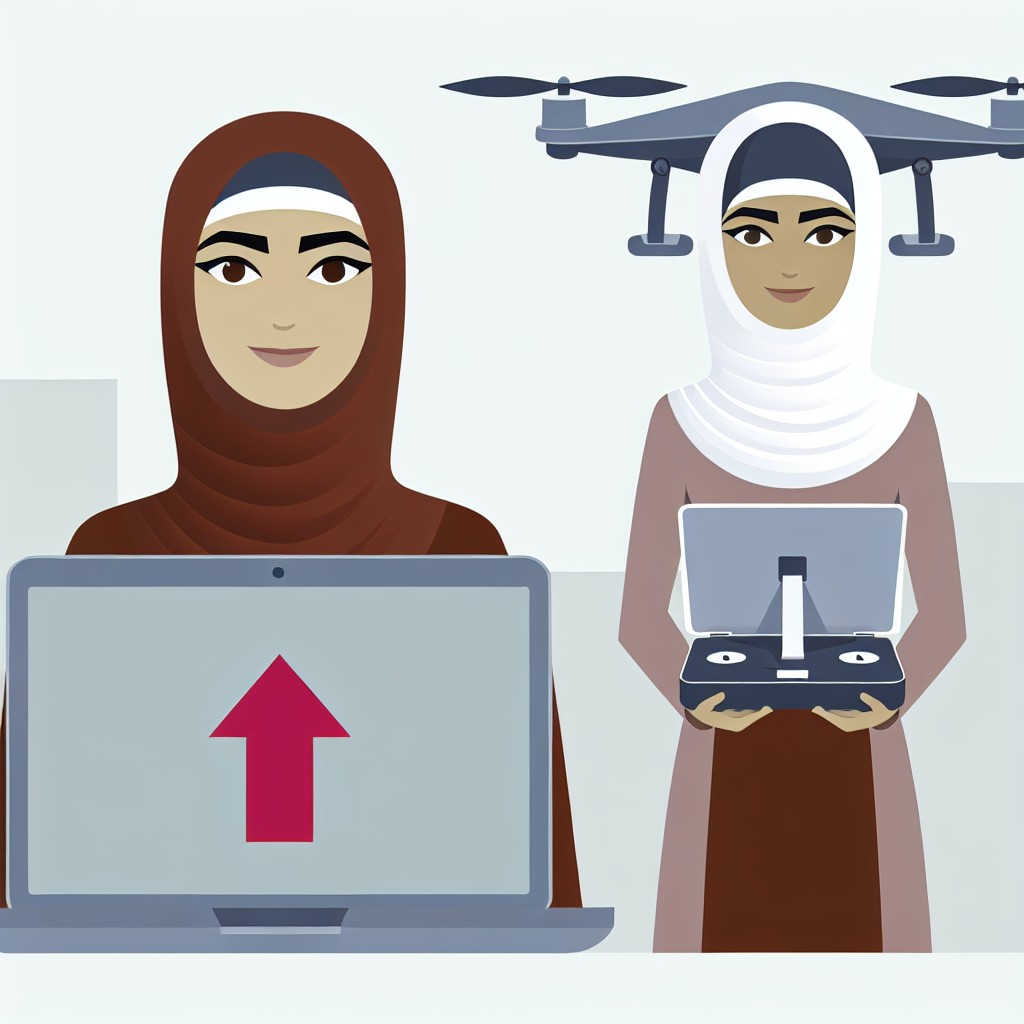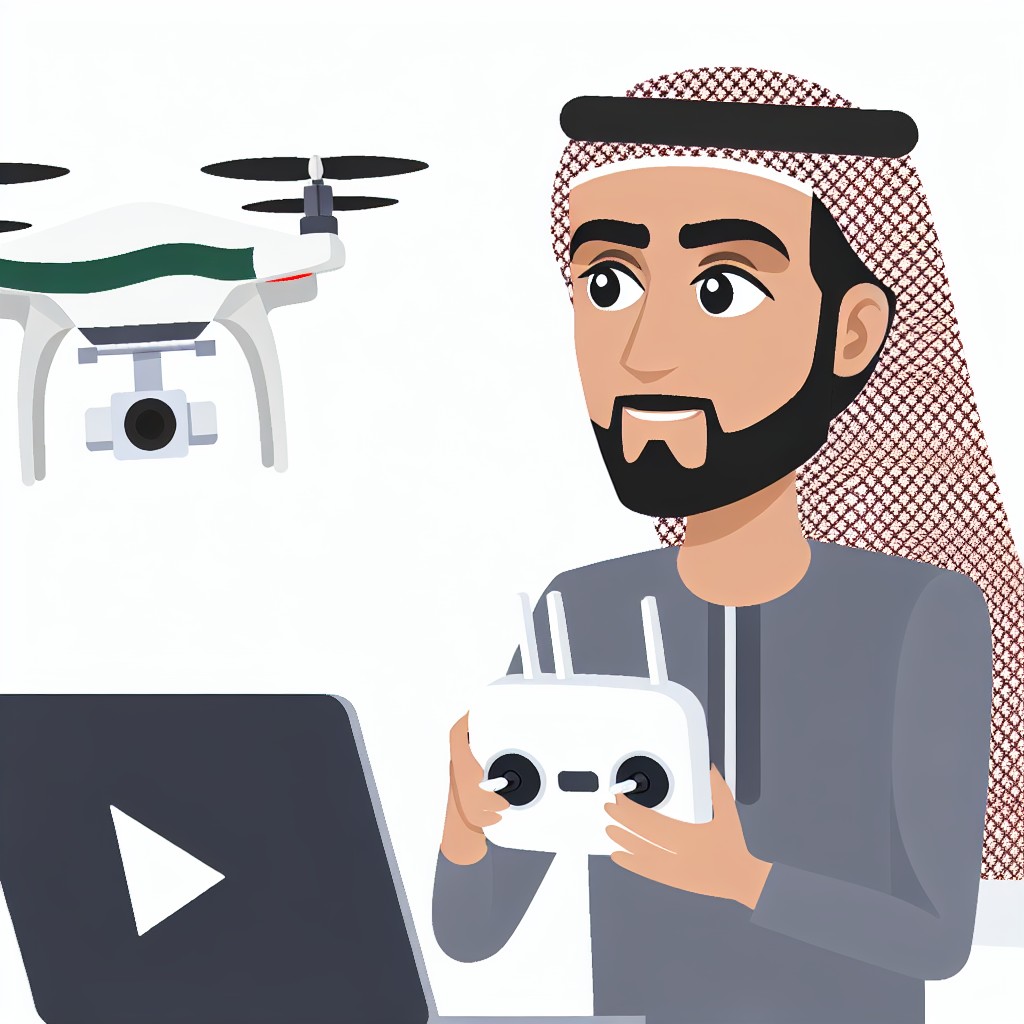Introduction to Drone Technology and Its Emergence in Real Estate Surveys
Rise of Drone Technology
Drone technology has rapidly advanced in recent years.
Many industries now adopt drones for various applications.
The real estate sector benefits significantly from this technology.
Drones offer innovative solutions for property inspections.
They provide aerial perspectives that were previously difficult to capture.
Adoption of Drones in Real Estate Surveys
Real estate professionals increasingly use drones for property evaluations.
Surveyors can gather comprehensive visual data efficiently.
Drones enable quick assessments of land features and structural conditions.
They reduce the need for expensive and time-consuming manual surveys.
Companies like Horizon Aerial Services have pioneered integrating drones into workflows.
Advantages Encouraging Drone Implementation
Drones improve accuracy by capturing high-resolution images and videos.
They also access hard-to-reach or unsafe areas safely.
This technology helps create 3D models for detailed property analysis.
Real estate agents use drone footage to enhance marketing presentations.
Drones streamline survey processes and provide valuable property insights.
Advantages of Using Drones for Property Surveying Compared to Traditional Methods
Enhanced Efficiency and Speed
Drones collect comprehensive property data faster than manual surveys.
They cover large areas quickly.
This reduces total survey time significantly.
Moreover, drones eliminate the need for surveyors to physically access difficult terrain.
This approach accelerates project timelines.
It also improves overall productivity.
Improved Accuracy and Detail
Drone-mounted cameras and sensors capture high-resolution images and data.
These precise measurements surpass many traditional methods in accuracy.
Additionally, drones use GPS technology to geo-tag each image reliably.
Consequently, surveyors receive detailed topographical maps and 3D models.
Safety Benefits for Survey Teams
Drones reduce the risk of accidents by removing the need for onsite personnel in hazardous locations.
They operate safely over unstable or inaccessible properties.
This ensures no workers are endangered.
Furthermore, drones can inspect areas like rooftops and cliffs remotely and safely.
This protection minimizes workplace injuries during surveys.
Cost-Effectiveness in Survey Operations
Drone surveys require fewer labor hours than traditional ground methods.
They also reduce equipment rental expenses.
Transportation costs decrease as well.
Landmark Property Analytics reports significant cost savings using drones.
Therefore, clients enjoy competitive pricing and quicker survey delivery.
Put Your Tech Company on the Map!
Get featured on Nicholas Idoko’s Blog for just $50. Showcase your business, boost credibility, and reach a growing audience eager for tech solutions.
Publish NowComprehensive Data Collection Capabilities
Drones capture multiple data types including thermal imaging and LiDAR scans.
These technologies reveal structural issues and land features undetectable by eye.
In fact, drone data supports better decision-making for developers and investors alike.
Consequently, property evaluations become more accurate and insightful.
Environmental and Regulatory Advantages
Drones minimize environmental disturbance during surveying activities.
They reduce the need for heavy machinery onsite.
Using large crews becomes unnecessary.
Additionally, drone surveys comply with many local land use and privacy regulations.
Hence, regulatory approval processes become smoother and faster.
Types of Drones Commonly Used in Real Estate Property Surveys
Multirotor Drones
Multirotor drones are the most popular choice for real estate surveys.
They have multiple rotors that provide excellent stability in flight.
These drones hover well and can capture detailed images from various angles.
Because of their maneuverability, inspectors can use them in tight or complex spaces.
Moreover, companies like SkyView Imaging often deploy multirotor drones for urban property assessments.
Fixed-Wing Drones
Fixed-wing drones are ideal for surveying large land areas efficiently.
Their airplane-like structure allows them to cover wide properties quickly.
They consume less power, enabling longer flight times compared to multirotor types.
Landmark Survey Solutions frequently employs fixed-wing drones for expansive commercial properties.
However, these drones require more space to take off and land.
Hybrid VTOL Drones
Hybrid VTOL drones combine features from multirotor and fixed-wing drones.
They can take off vertically and glide over long distances thereafter.
This capability offers flexibility in both confined and open survey environments.
RealTech Solutions has recently integrated hybrid VTOL drones to improve efficiency.
Furthermore, this type provides higher endurance without sacrificing detail accuracy.
Drones Equipped with Specialized Sensors
Certain drones come with advanced sensors to enhance survey data quality.
These sensors include LiDAR, thermal cameras, and multispectral imagers.
LiDAR sensors create precise 3D maps of terrain and structures.
Companies like TerraScan Innovations utilize these drones for topographic and vegetation analysis.
Additionally, thermal imaging helps detect heat loss or moisture issues in buildings.
Factors to Consider When Selecting a Drone for Property Surveys
Selecting the appropriate drone depends on the property’s size and survey goals.
Multirotor drones work best for detailed inspections of small to medium sites.
Fixed-wing or hybrid drones suit extensive properties requiring wide coverage.
In contrast, drones with specialized sensors assist in technical evaluations.
Consulting with experts such as AeroSurvey Professionals ensures the best choice for specific projects.
Discover More: AI-Driven Tenant Screening: Enhancing Efficiency in Property Leasing
Put Your Tech Company on the Map!
Get featured on Nicholas Idoko’s Blog for just $50. Showcase your business, boost credibility, and reach a growing audience eager for tech solutions.
Publish NowApplications of Drone Technology in Cadastral and Topographic Surveys
Enhancing Cadastral Surveys with Drones
Drones provide precise mapping capabilities for cadastral surveys.
Surveyors like Marcus Caldwell use drones to capture detailed boundary data efficiently.
Moreover, drones reduce human error by offering consistent aerial imagery.
They enable faster data collection compared to traditional ground methods.
Therefore, companies such as Summit Survey Systems have integrated drones into their workflow.
This technology assists in resolving boundary disputes through accurate property line verification.
Additionally, drones improve documentation by generating high-resolution orthomosaic maps.
Advancements in Topographic Surveying Through Drone Usage
Drones revolutionize topographic surveys by capturing detailed elevation data.
Firms like TerraPoint Solutions deploy drones to survey challenging terrains safely.
Equipped with LiDAR and photogrammetry sensors, drones gather accurate 3D terrain models.
Consequently, this technology aids engineers in designing infrastructure with precise topography.
Furthermore, drones enable frequent data updates, facilitating real-time monitoring of land changes.
They minimize fieldwork risks by surveying hazardous or inaccessible areas remotely.
Thus, survey teams reduce labor costs and complete projects faster using drones.
Significant Benefits of Drones in Real Estate Property Surveys
- Drones capture high-resolution aerial images for comprehensive property assessments.
- They provide accurate 3D models that support detailed land analysis.
- This technology accelerates survey processes, enabling quicker decision-making.
- They enhance safety by limiting the need for physical site visits in difficult areas.
- Drones help create updated records that aid urban planners and developers alike.
Drone technology significantly transforms cadastral and topographic surveying.
Professionals increasingly rely on this innovation to improve accuracy and efficiency.
Gain More Insights: Cybersecurity for Smart Homes: Protecting Real Estate in the Digital Age
How Drone Data Improves Accuracy and Detail in Property Mapping
Enhanced Precision through Aerial Imaging
Drones capture high-resolution aerial images that reveal intricate property details.
These images provide a bird’s-eye view.
This view allows surveyors to analyze large areas efficiently.
Consequently, survey accuracy improves as drones reduce human error during data collection.
Moreover, drone-mounted sensors collect precise measurements in real time.
This technology enables surveyors like Elise Thornton of Skyline Surveying Ltd. to deliver exact property boundaries.
Comprehensive Data Collection
Drones gather diverse datasets, including topography, vegetation, and structural information.
They scan terrain quickly and repeatedly.
The scans capture changes over time.
Hence, property mapping benefits from both spatial and environmental data integration.
For instance, Hutchinson Land Mapping uses drone surveys to enhance site evaluations for clients.
This comprehensive data allows for detailed analysis beyond traditional ground surveys.
Faster Survey Times and Cost Efficiency
Drone surveys complete data collection much faster than conventional methods.
They reduce the need for extensive manual labor.
This reduction minimizes survey costs.
Furthermore, drones access difficult-to-reach areas safely and without delays.
Survey companies like Vanguard Property Solutions report faster project turnarounds using drone technology.
Therefore, clients receive up-to-date and detailed property maps at a lower price point.
Put Your Tech Company on the Map!
Get featured on Nicholas Idoko’s Blog for just $50. Showcase your business, boost credibility, and reach a growing audience eager for tech solutions.
Publish NowIntegration with Advanced Mapping Technologies
Drone-collected data integrates seamlessly with GIS and CAD software.
This integration enables precise digital modeling of properties and terrains.
As a result, real estate agents and developers visualize properties more effectively.
For example, Meridian Mapping Group transforms drone data into interactive 3D maps for clients.
These tools improve decision-making throughout the property development process.
Improved Legal and Compliance Documentation
Detailed drone surveys support legal documentation and land registration processes.
They provide credible evidence of property boundaries and conditions.
Thus, disputes and regulatory challenges become easier to resolve.
Law firms such as Brockwell & Pierce rely on drone data to support real estate cases robustly.
In consequence, property owners obtain more secure and verified survey reports.
Explore Further: Digital Mortgage Platforms: Simplifying Real Estate Financing
Integration of Drone Surveys with Geographic Information Systems (GIS) and 3D Modeling
Enhancing Data Collection Through Drone Technology
Drones capture high-resolution aerial images efficiently and accurately.
They gather extensive data from diverse real estate properties quickly.
Moreover, drones cover difficult terrains that traditional surveys often miss.
Therefore, drones provide comprehensive visual information for geospatial analysis.
Additionally, real estate professionals benefit from timely and precise survey data.
Combining Drone Data with Geographic Information Systems
GIS allows effective organization, analysis, and visualization of spatial data.
Drone-collected images integrate seamlessly into GIS databases.
This integration helps create detailed property maps and land-use plans.
Consequently, GIS supports enhanced decision-making for developers and surveyors.
Furthermore, interactive GIS platforms enable dynamic data updates and sharing.
Advancing Property Visualization Using 3D Modeling
Drones generate accurate point clouds and elevation data for 3D reconstruction.
These data sets transform into realistic 3D models of buildings and terrains.
Such models provide immersive views that improve client presentations.
Real estate agents use 3D visualizations to showcase properties more effectively.
Investors also appreciate virtual walkthroughs that assist in assessing property value.
Benefits of Integrated Drone Surveys in Real Estate
- Faster survey completion with minimal human intervention.
- Improved accuracy in boundary and topography measurements.
- Cost-effective data acquisition compared to traditional methods.
- Enhanced data management through GIS-enabled mapping tools.
- Immersive property analysis via interactive 3D models.
Emerging Trends in Drone-GIS Integration for Real Estate
Leading companies like TerraVista Solutions pioneer drone-GIS survey services.
Experts such as surveyor Lucas Fernandez advocate integrating these technologies.
They foresee expanded use of drones in urban planning and real estate development.
Moreover, advancements in software will simplify GIS and 3D model creation.
Eventually, these innovations will become standard tools across the real estate sector.
Delve into the Subject: AI-Powered Home Valuation: Accuracy and Efficiency in Property Appraisal

Regulatory and Privacy Considerations When Deploying Drones in Real Estate
Understanding Aviation Regulations
Drone operators must comply with Federal Aviation Administration (FAA) rules.
These regulations ensure safe and legal drone flights over private properties.
Moreover, pilots require proper certification to operate commercially.
Put Your Tech Company on the Map!
Get featured on Nicholas Idoko’s Blog for just $50. Showcase your business, boost credibility, and reach a growing audience eager for tech solutions.
Publish NowCompanies like AeroVista Drone Experts emphasize training to meet these standards.
Additionally, drones must stay within designated altitude limits set by authorities.
Addressing Privacy Concerns in Real Estate Surveys
Privacy protection remains a key concern when using drones for property surveys.
Real estate firms must avoid capturing neighboring properties without consent.
Furthermore, restricting image storage and access safeguards client information.
For example, Summit Realty Group implements strict data access protocols.
Operators should notify residents about drone activities to build trust.
Permits and Local Ordinances
Cities often require permits before flying drones in residential areas.
Local laws can differ significantly, so research is essential before deployment.
For instance, Lakeside City enforces specific drone restrictions near schools.
Collaborating with municipal authorities helps prevent legal complications.
Real estate agents benefit from understanding these rules before scheduling flights.
Best Practices for Ethical Drone Usage
Respecting neighbors' privacy fosters goodwill and minimizes disputes.
Operators should conduct pre-flight checks to avoid intrusions accidentally.
Using geofencing technology limits drone access to authorized zones only.
Leaders like Marcus Bennett promote transparent communication during surveys.
Finally, maintaining compliance enhances professionalism and client confidence.
Case Studies Showcasing Successful Use of Drones in Property Surveys
Enhancing Accuracy for Greenfield Developments
Wellington Land Designs used drones to survey a large greenfield site in Colorado.
The company captured high-resolution aerial images of the terrain quickly.
Consequently, surveyors identified subtle elevation changes missed by ground surveys.
This approach reduced survey time by 40% and improved topographical accuracy significantly.
Furthermore, the drone data allowed better planning for drainage and access roads.
Efficient Surveying of Historic Properties
Heritage Realty Group deployed drones to survey a 19th-century estate in Virginia.
The drones captured detailed images of rooftops and facades without scaffolding.
As a result, inspectors avoided safety hazards while obtaining comprehensive survey data.
Moreover, they identified structural issues early, enabling timely repairs and renovation.
This use of drone technology saved several weeks compared to traditional methods.
Rapid Surveying for Urban Redevelopment Projects
Skyline Property Consultants utilized drones for a downtown redevelopment in Seattle.
The aerial survey provided precise measurements of multiple plots surrounded by buildings.
Survey teams integrated drone data with 3D modeling software seamlessly.
Therefore, they accelerated project approvals by presenting clear visual evidence to planners.
Additionally, drone surveys helped identify optimum spots for green spaces and infrastructure.
Cost-Effective Surveying in Remote Locations
Summit Land Surveyors employed drones to assess a rural mountain property in Montana.
The challenging terrain made manual surveying expensive and time-consuming.
Drones accessed difficult areas easily, capturing both imagery and terrain mapping data.
Put Your Tech Company on the Map!
Get featured on Nicholas Idoko’s Blog for just $50. Showcase your business, boost credibility, and reach a growing audience eager for tech solutions.
Publish NowAs a result, the firm reduced costs by over 30% while maintaining data quality.
The client appreciated the quick turnaround and minimal environmental disruption.
Improving Stakeholder Communication with Visual Data
Everest Real Estate used drone footage to update investors on a large commercial project.
The aerial videos showcased site progress clearly from multiple angles.
This visual proof helped maintain investor confidence and supported fundraising efforts.
Consequently, stakeholder meetings became more productive and transparent.
Drone surveys thus served as a valuable communication tool beyond data collection.
Cost-benefit Analysis of Adopting Drone Technology in Real Estate Surveying
Initial Investment and Operational Costs
Adopting drone technology requires upfront investment in hardware and software.
High-quality drones equipped with advanced sensors ensure precise data.
For example, SkyView Innovations provides drones with accurate sensing capabilities.
Training surveyors to operate drones adds to initial costs.
Despite these expenses, operational costs decrease over time due to efficiency gains.
Additionally, drone maintenance is generally less expensive than traditional surveying equipment upkeep.
Time Efficiency and Data Accuracy
Drones significantly reduce surveying time compared to manual methods.
Survey teams such as those at GreenField Realty complete property surveys faster with drones.
This acceleration improves decision-making and shortens project timelines.
Moreover, drones provide high-resolution images and accurate topographical data.
This accuracy reduces errors and costly re-surveys for companies like Horizon Property Group.
Safety and Accessibility Benefits
Drones enhance safety by minimizing the need for surveyors to access hazardous areas.
This factor lowers risks when surveying unconventional or difficult terrain.
Furthermore, drones enable surveys of remote or hard-to-reach properties efficiently.
Companies such as Altitude Surveying Services leverage drone accessibility to expand their clientele.
Financial Return and Competitive Advantage
Over time, drone adoption leads to significant cost savings in labor and equipment use.
These savings translate into higher profit margins for real estate firms like Cedar Ridge Estates.
Moreover, utilizing drones offers a competitive edge by showcasing technological innovation.
Clients increasingly prefer companies that provide rapid and precise property evaluations.
Therefore, investing in drone technology supports both financial growth and market positioning.
Regulatory and Operational Challenges
Regulatory compliance poses an ongoing challenge when operating drones for surveys.
Surveyors must navigate FAA regulations and obtain necessary flight permissions.
Data privacy concerns also require attention to protect client information.
Additionally, drone weather limitations can delay surveying schedules during adverse conditions.
Despite these challenges, careful planning allows firms like Horizon Surveys to mitigate risks effectively.
Future Trends and Innovations in Drone Technology Impacting Property Assessment
Advancements in Imaging and Sensor Technology
Drone technology is evolving rapidly with enhanced imaging capabilities.
High-resolution cameras now capture more detailed visuals of properties.
Moreover, multispectral and thermal sensors enable deeper property analysis.
Put Your Tech Company on the Map!
Get featured on Nicholas Idoko’s Blog for just $50. Showcase your business, boost credibility, and reach a growing audience eager for tech solutions.
Publish NowThese sensors help detect structural issues invisible to the naked eye.
Consequently, assessors can offer more accurate and comprehensive reports.
Companies like SkyVision Solutions lead innovation in integrated sensor packages.
AI and Machine Learning Integration
Artificial intelligence improves the processing of drone-collected data.
AI algorithms analyze images swiftly to identify potential property defects.
In addition, machine learning models predict maintenance needs based on survey data.
Real estate firms, such as Horizon Assessments, employ these technologies actively.
This integration reduces human error and speeds up the assessment workflow.
Autonomous Drone Operations
Autonomous drones now perform surveys without constant human control.
They follow pre-programmed flight paths, increasing efficiency and safety.
Companies like AeroMap Technologies develop reliable autonomous surveying systems.
Consequently, property assessments complete faster with consistent data quality.
Furthermore, autonomous drones operate well in varied weather conditions.
Enhanced Data Processing and Cloud Integration
Cloud platforms enable instant data upload and real-time collaboration.
Survey data is accessible immediately to stakeholders worldwide.
Innovators like ClearView Analytics provide specialized cloud solutions for drone data.
This accessibility facilitates faster decision-making in property sales and development.
Also, it allows integration with geographic information systems for advanced mapping.
Increased Regulatory Support and Safety Features
Regulatory bodies are adapting rules to encourage safe drone deployments.
New standards ensure drones operate securely around sensitive properties.
Additionally, companies integrate collision avoidance and geo-fencing technologies.
SafeSky Drones specializes in advanced safety protocols for real estate surveying.
These improvements boost client confidence in using drone surveys.
Potential for Virtual and Augmented Reality Applications
Future drones may capture data that feeds virtual reality models.
These models provide immersive property tours for remote buyers.
Augmented reality will overlay real-time data during inspections.
DynaSpace Realty invests in VR and AR to enhance client engagement.
Such innovations transform traditional property assessments into interactive experiences.
Additional Resources
A Labor Day Look at Jobs in the Drone Industry
Before You Go…
Hey, thank you for reading this blog post to the end. I hope it was helpful. Let me tell you a little bit about Nicholas Idoko Technologies.
We help businesses and companies build an online presence by developing web, mobile, desktop, and blockchain applications.
We also help aspiring software developers and programmers learn the skills they need to have a successful career.
Take your first step to becoming a programming expert by joining our Learn To Code academy today!
Be sure to contact us if you need more information or have any questions! We are readily available.
Put Your Tech Company on the Map!
Get featured on Nicholas Idoko’s Blog for just $50. Showcase your business, boost credibility, and reach a growing audience eager for tech solutions.
Publish Now[E-Books for Sale]
1,500 AI Applications for Next-Level Growth: Unleash the Potential for Wealth and Innovation
$5.38 • 1,500 AI Applications • 228 pages
Are you ready to tap into the power of Artificial Intelligence without the tech jargon and endless guesswork? This definitive e-book unlocks 1,500 real-world AI strategies that can help you.
See All 1,500 AI Applications of this E-Book
750 Lucrative Business Ideas: Your Ultimate Guide to Thriving in the U.S. Market
$49 • 750 Business Ideas • 109 pages
Unlock 750 profitable business ideas to transform your future. Discover the ultimate guide for aspiring entrepreneurs today!
See All 750 Business Ideas of this E-Book
500 Cutting-Edge Tech Startup Ideas for 2024 & 2025: Innovate, Create, Dominate
$19.99 • 500 Tech Startup Ideas • 62 pages
You will get inspired with 500 innovative tech startup ideas for 2024 and 2025, complete with concise descriptions to help you kickstart your entrepreneurial journey in AI, Blockchain, IoT, Fintech, and AR/VR.
We Design & Develop Websites, Android & iOS Apps
Looking to transform your digital presence? We specialize in creating stunning websites and powerful mobile apps for Android and iOS. Let us bring your vision to life with innovative, tailored solutions!
Get Started Today





